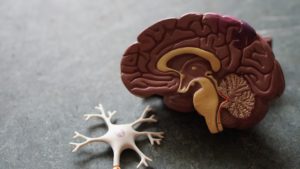Unveiling the Gender Divide: 9 Fascinating Facts About Pain in Men and Women
Do men and women exhibit variations in their experience of pain? Women tend to experience pain more frequently than men. While it was traditionally assumed that women were generally more sensitive to pain, contemporary research reveals a more complex picture, with studies often yielding differing conclusions [7]. Explore nine intriguing insights into the dynamics of pain in both women and men:
1) Pain perception in men and women is shaped by a complex interplay of biological variances, including differences in hormones, genetics, immune responses, and brain and nervous system processes. Additionally, psychosocial factors, such as coping strategies and social expectations, significantly influence how both genders experience pain [3,10]
2) Research in mice suggests the existence of two sex-specific pain processing pathways. When nerve injury induces pain sensitivity in a lab setting, distinct immune cell responses are observed in male and female mice. The selection of immune cells or pain processing pathway appears to be influenced by testosterone levels. While there are hints of potential parallels in humans, it is essential to note that this research is still in its early stages [3].

3) Women appear to have a lower pain threshold than men, but this difference is specific to certain pain stimuli, such as pressure pain. It is important to note that the pain threshold should not be confused with overall pain sensitivity, as various factors contribute to the latter [5].
4) Women also inhibit increased sensitivity to sensory stimuli in other domains, including touch, smell, and color vision [5].
5) Females appear to demonstrate more affective adaptation and habituation than males when it comes to prolonged pain [5].
6) Evidence suggests subtle distinctions between men and women in prescribing, consumption, and responses to certain analgesics. Influential factors encompass age, weight, underlying medical conditions, and the specific type of analgesic employed. Further research on this subject is warranted [8].
7) Men and women employ distinct coping strategies to manage pain. Men tend to lean towards problem-oriented coping and utilize distraction through activities. Conversely, women are more inclined to use coping mechanisms such as seeking social support, accepting pain, redirecting attention, engaging in emotion-oriented coping, and employing cognitive coping techniques [2,9].
One potential risk factor for women is their tendency to catastrophize more frequently than men, which can exacerbate pain (you can find information and tips on this topic here). Additionally, women often exhibit lower self-efficacy than men, which translates to less self-confidence and is associated with increased pain and a higher prevalence of physical symptoms [2].

8) Individual expectations and values play a significant role in shaping one’s perception of pain. For instance, there is a link between a person’s gender role beliefs and how they perceive pain. Those who strongly believe in gender-related differences in pain perception tend to align their behavior accordingly [1]. It is important to note that gender roles and expectations related to pain perception can vary across different cultures [4].
9) Finally, the expectations and attitudes of the surrounding environment play a significant role. In a study involving over 600 participants, videos featured both men and women experiencing back pain at their workplace [6]. The findings revealed that women’s pain was consistently rated as less severe and more likely to be perceived as exaggerated. It was attributed less to medical causes and was judged to require fewer interventions such as pain medication or workplace adjustments. Conversely, women’s pain was more often attributed to psychological factors, leading to recommendations for psychological treatment. Interestingly, another study found that medical students rated women’s pain as more severe than men’s, even when both exhibited the same facial expression [11]. Similarly, pain-related postures were rated more painful in women than men [12].
In summary, multiple mechanisms contribute to sex differences in pain perception. The research underscores the intricate nature of pain and the many influencing factors at play. These findings hold promise for the future, potentially leading to more tailored pain approaches for patients. Additionally, some insights from these studies can be applied by individuals to enhance their coping strategies. For practical tips, you can refer to the provided resource.
References
- Current Research on Endometriosis: An Interview with Louis Taffs - 28. June 2024
- Current Research on Endometriosis: An Interview with Dr. Tatjana Gibbons - 13. February 2024
- Current Research on Endometriosis: An Interview with Luana De Giorgio - 12. February 2024
